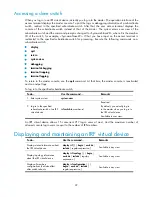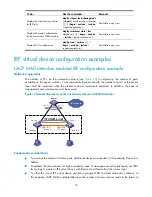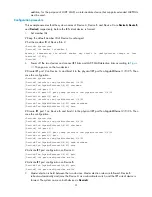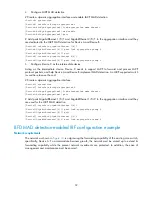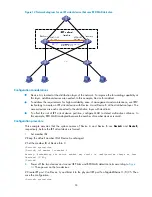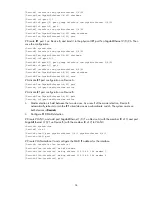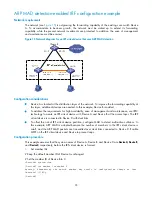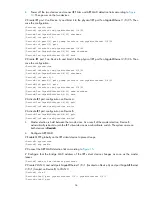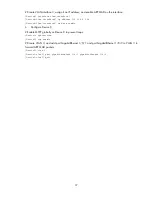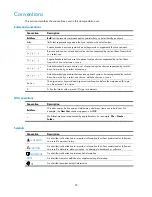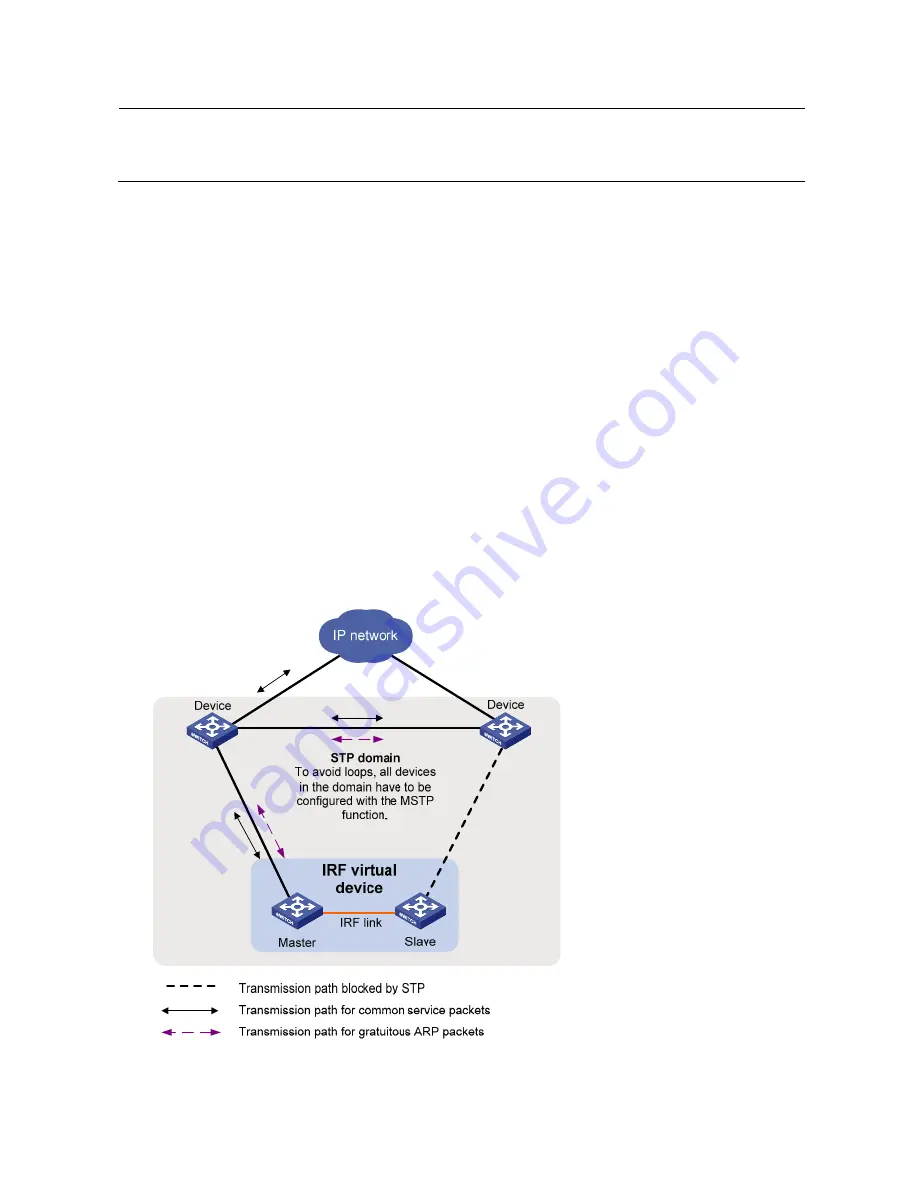
25
Configuring ARP MAD
CAUTION:
If the intermediate device is in an IRF virtual device, you must assign this virtual device a different
domain ID than the ARP MAD-enabled virtual device to avoid false detection of IRF partition.
1.
ARP MAD detection mechanism
With ARP MAD, an IRF member switch sends extended gratuitous ARP packets that convey the domain
ID and active ID of the IRF virtual device for detecting an IRF split. The domain ID uniquely identifies an
IRF virtual device in the network, and the active ID is identical to the member ID of the master switch in
the IRF virtual device.
An IRF member switch compares the domain ID and the active ID in each received extended gratuitous
ARP packet with its domain ID and active ID:
•
If the domain IDs are different, the extended gratuitous ARP packet is from a different IRF virtual
device, and the switch does not continue to process the packet with the MAD mechanism.
•
If the domain IDs are the same, the switch compares the active IDs:
{
If the active IDs are different, the IRF virtual device has split.
{
If the active IDs are the same, the IRF virtual device is operating normally.
2.
Network requirements
Set up ARP MAD links between neighbor IRF member switches, or more commonly, between each IRF
member switch and an intermediate switch (see
Figure 10
). If an intermediate switch is used, you must
enable MSTP on the intermediate switch and the IRF virtual device.
Figure 10
Network diagram for ARP MAD detection



















